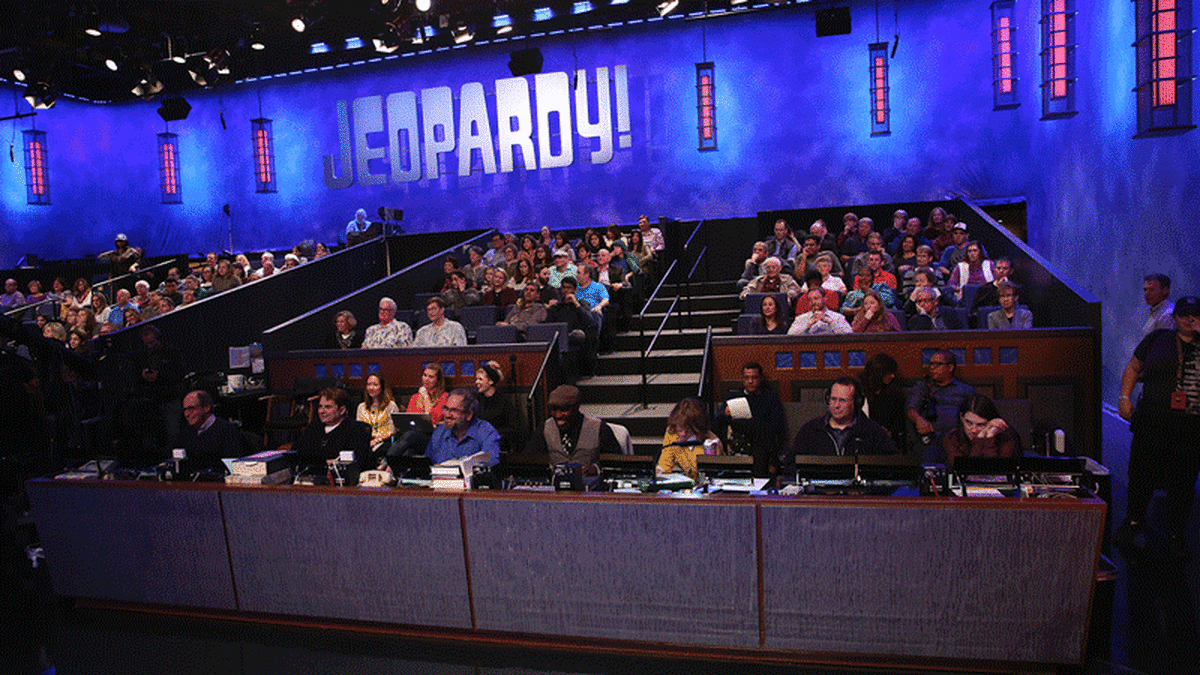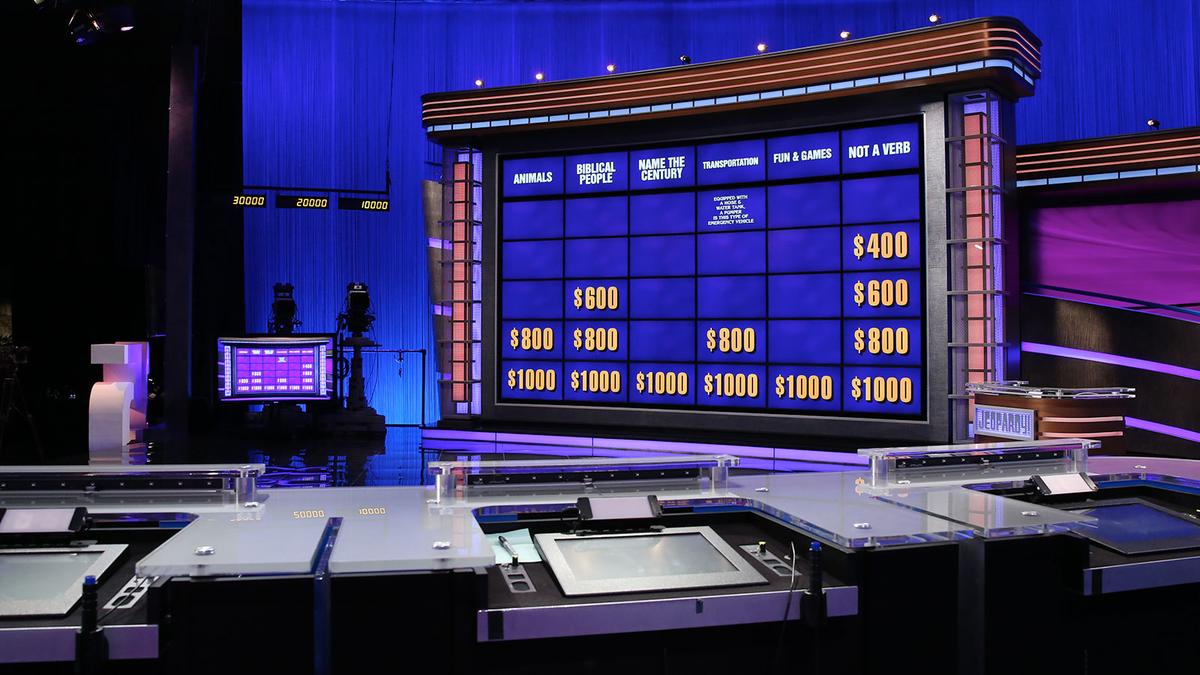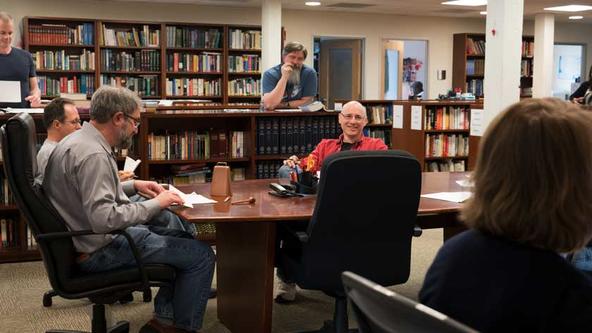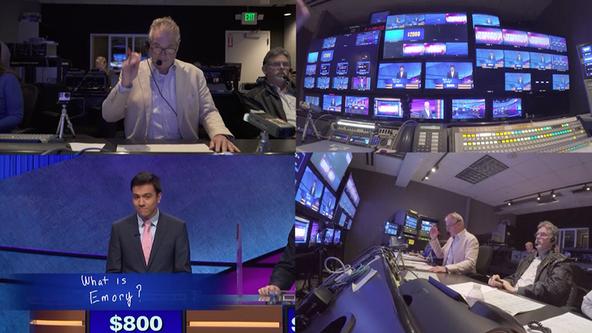Featured J!Buzz
Every Jeopardy! fan is familiar with certain iconic views of the Jeopardy! stage: Alex behind his lectern, contestants behind their podiums attempting to buzz in, and, of course, the gameboard and clues themselves. But there are a few things that no one at home can see from their side of the TV screen that are critical elements of the daily show. Here are some of the unseen cogs in the machine that run behind every game.
1. Contestant Podium Risers
Though all of our contestants are of relatively equal stature in knowledge, they certainly run the gamut in physical height. What you don’t see is that each podium is equipped with a riser so that all of the contestants appear to be the same height. This reduces the need for constant readjustment of the cameras and keeps viewers at home from getting seasick. You’re welcome.

2. Clue Screen Monitor
Contestants can read each clue on the gameboard from their podiums as Alex reads them aloud. But occasionally a clue will be in a visual form, which means a special monitor is used so contestants can clearly decipher anything from a celebrity photo to a Broadway musical excerpt.
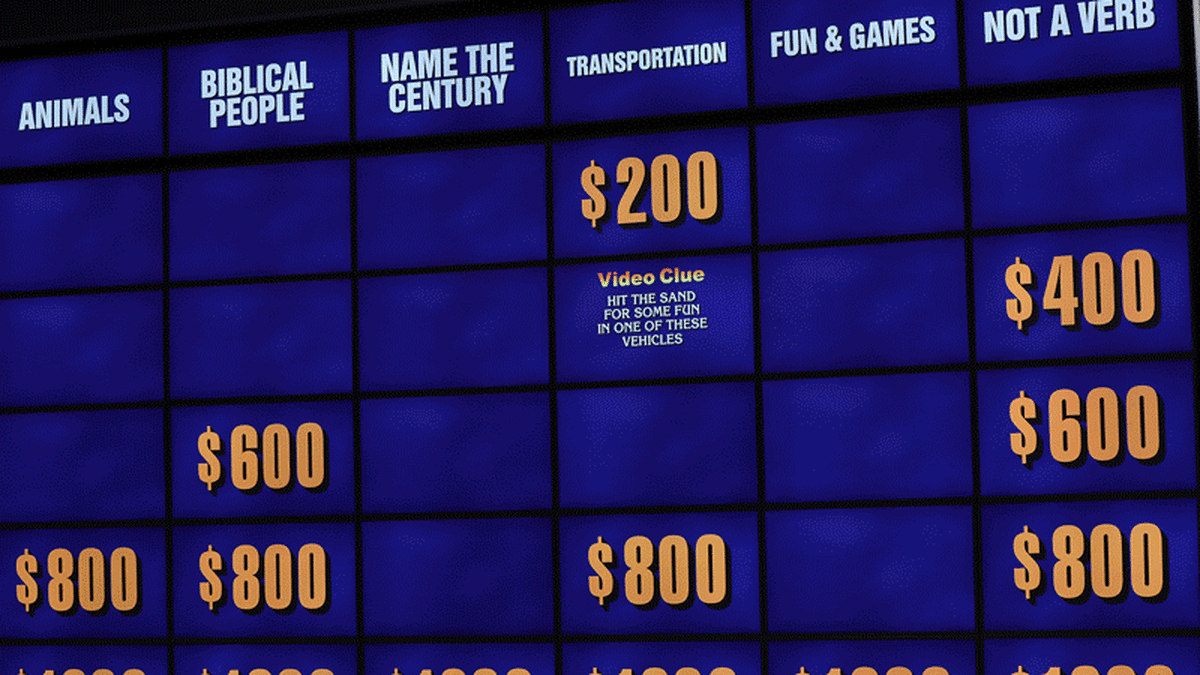
3. Gameboard Signal Lights
Immediately after each clue is read, contestants are on alert for the signal lights around the gameboard indicating that they are able to buzz in and respond. Attempts to buzz in prior to that crucial signal will actually lock them out for a quarter of a second – enough time to lose the first ring-in to another player. (Read more: How Does the Jeopardy! Buzzer Work?)
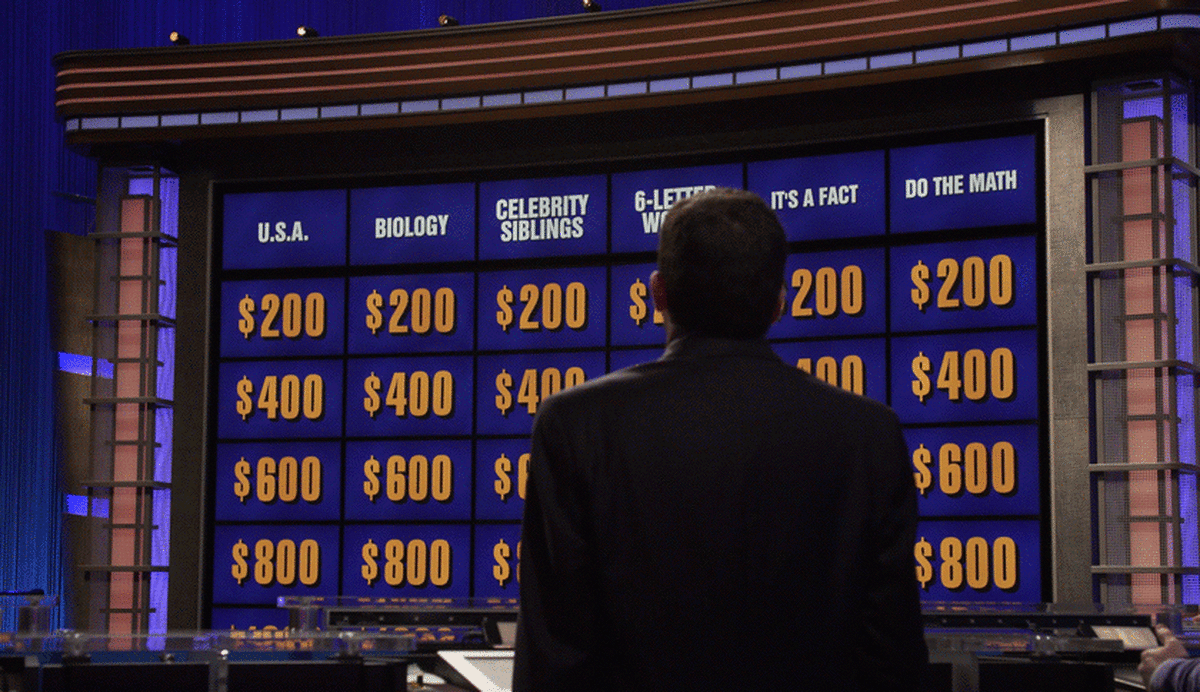
4. Podium Indicator Lights
While Alex is busy finding and reading clues in a rapid-fire game, the podiums have a small but very helpful visual cue to help him keep track of who selects the next clue. A little white light in the lower left corner turns on to indicate who answered the last clue correctly.
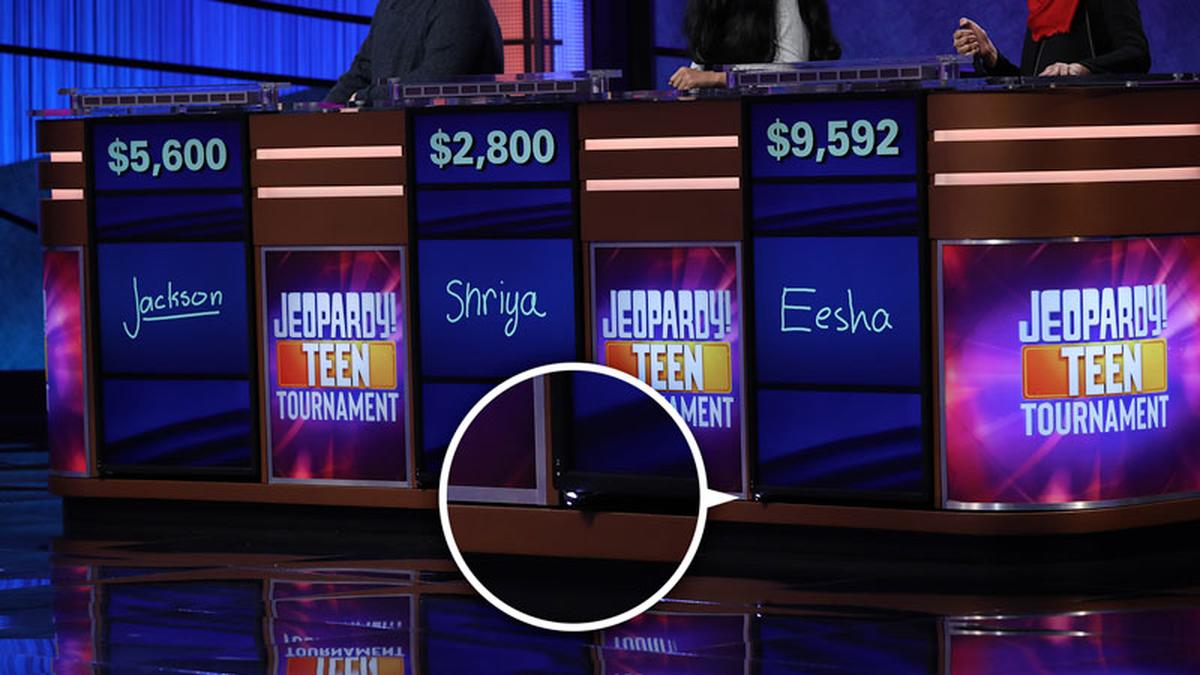
5. The Person Behind the Gameboard
Believe it or not, for each clue selected by a contestant to appear on the gameboard, it must be manually activated by a controller backstage. Here at Jeopardy!, we trust humans over robots for every aspect of the game.
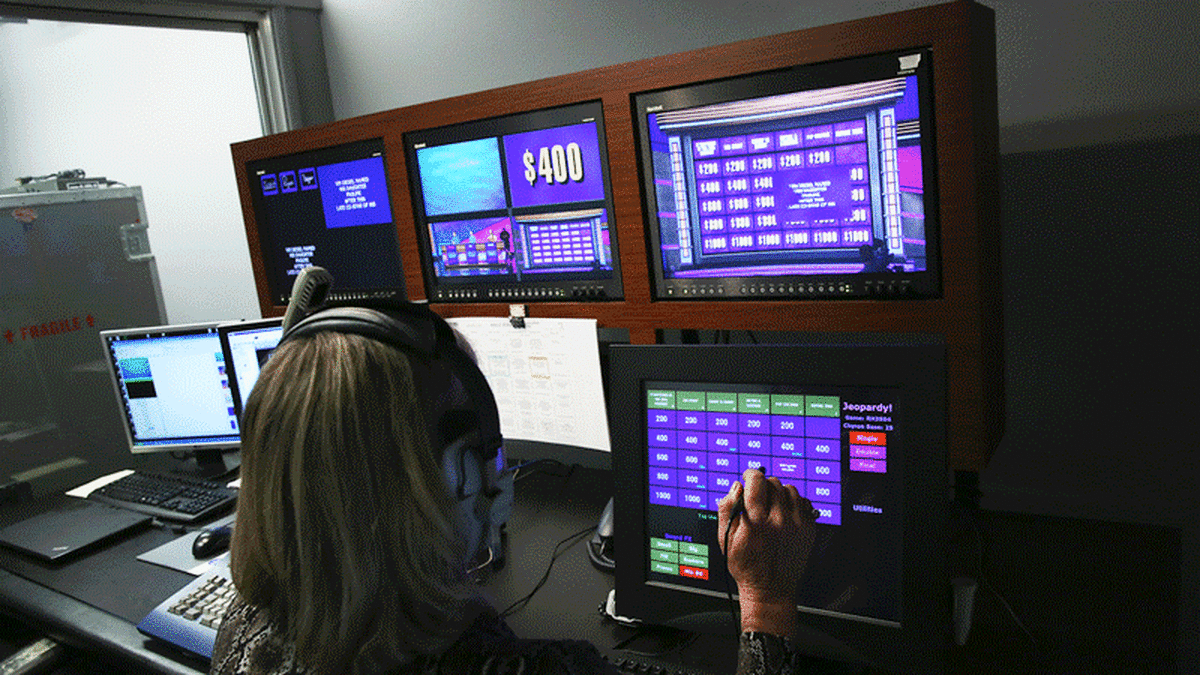
6. The “Other” Scoreboard
You may have wondered how contestants are able to quickly calculate Daily Double and Final Jeopardy! wagers. From where they stand, there is a scoreboard in their direct line of sight just to the left of the gameboard itself. (The speed of mental math, however, is still entirely in their hands.)
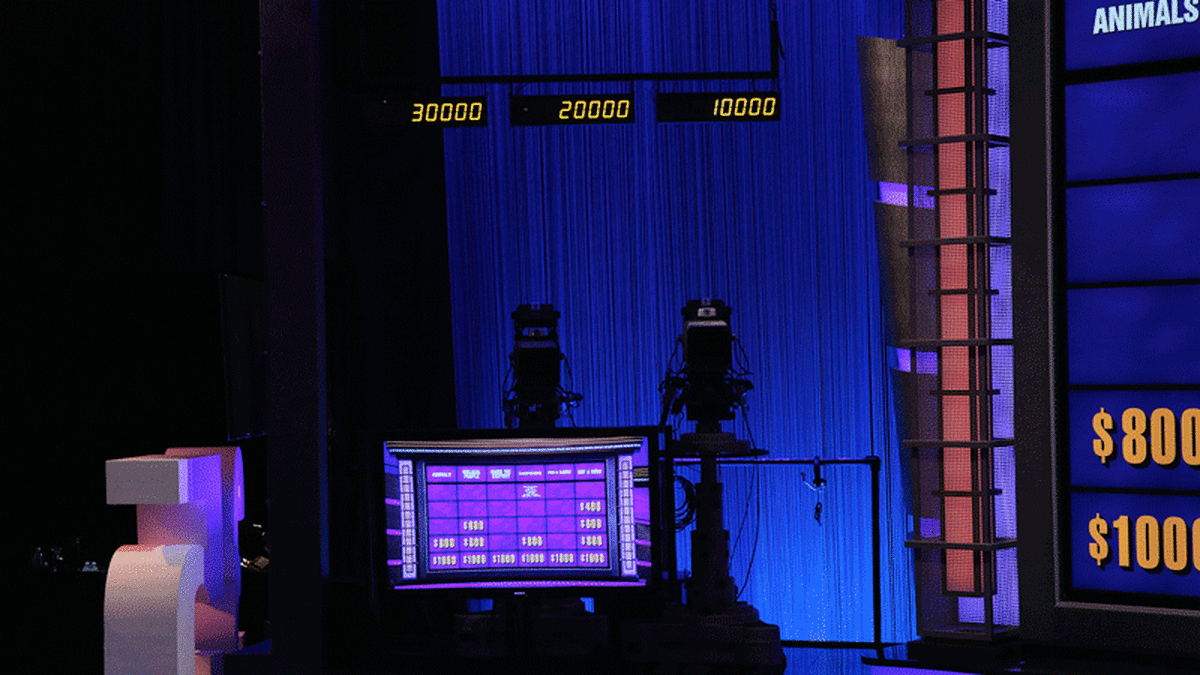
7. Judges’ Table (and the Red Phone)
And last but not least, the Judges’ Table is like the central brain of a Jeopardy! game. For every single clue, writers, researchers and producers listen carefully for every buzzer activation, clue misreading, and acceptable or unacceptable variations of responses. Speaking of which, every so often the game is even paused for the judges to confer with the research team, who they can quickly access by phone. The red phone is used by the head producers as a beeline to the director’s booth once a gameplay verdict has been reached.
